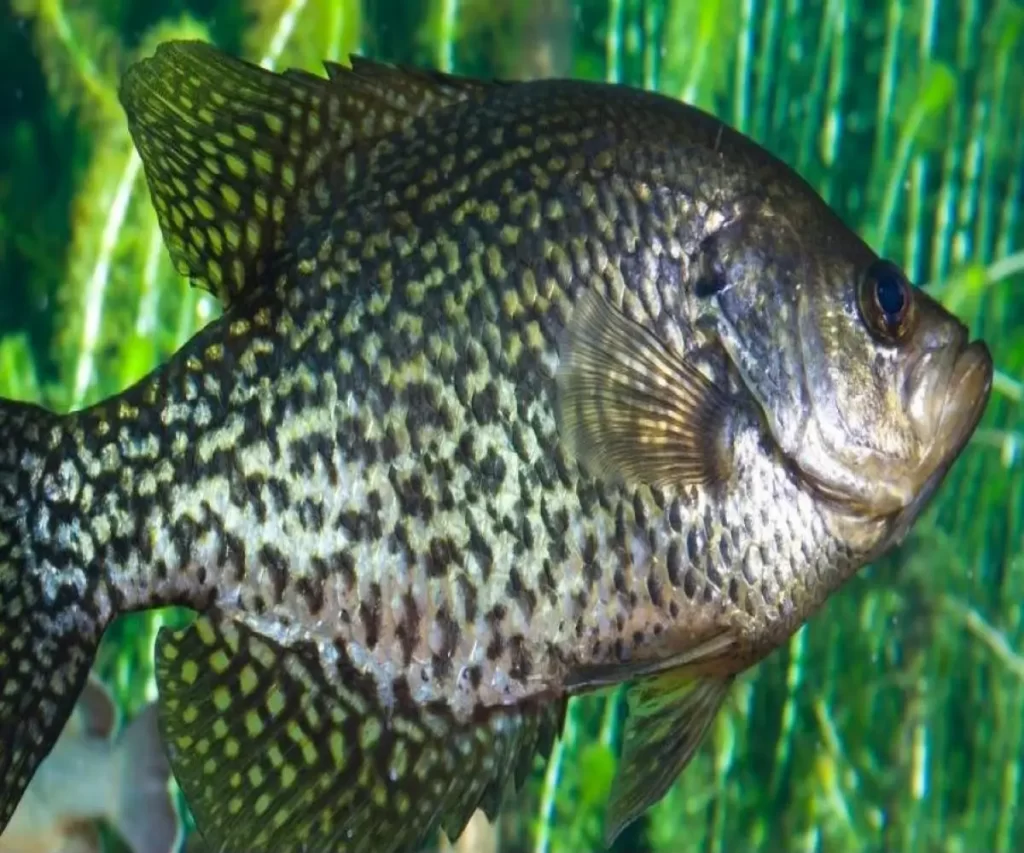
Black Crappie Fish Species Guide
Welcome to the fascinating world of the Black Crappie (Pomoxis nigromaculatus), a popular freshwater fish species that captivates anglers and naturalists alike. In this comprehensive guide, we will delve into the diverse aspects of Black Crappie, including its biology, habitat, behavior, fishing techniques, and conservation status. Whether you’re an avid angler seeking tips for a successful fishing expedition or simply intrigued by the wonders of aquatic ecosystems, join us on this exploration of the Black Crappie.
Taxonomy and Identification
- Taxonomy: The Black Crappie belongs to the Centrarchidae family, commonly known as sunfish, and is part of the Pomoxis genus. Its scientific name, Pomoxis nigromaculatus, reflects its distinctive dark coloration.
- Physical Characteristics:
- Size and Weight: Black Crappie typically range from 8 to 12 inches in length, with exceptional specimens reaching up to 19 inches. The average weight is around 1 pound.
- Coloration: As the name suggests, Black Crappie is characterized by a dark, mottled appearance, with irregular black spots on its silver or greenish body.
- Fins: The dorsal fin has a series of spines, and the anal fin possesses six spines. The dorsal and anal fins are connected.
Habitat and Distribution
- Natural Habitat: Black Crappie is native to North America and is widely distributed across the United States and Canada. It is a versatile species that can thrive in various freshwater environments.
- Preferred Environments:
- Lakes: Black Crappie is commonly found in both natural and man-made lakes, especially those with submerged structures like fallen trees and vegetation.
- Ponds: They adapt well to ponds, where they can find suitable habitat and abundant prey.
- Rivers and Streams: While not as common in flowing waters, Black Crappie can be found in slower-moving rivers and streams.
- Temperature Preferences:
- Black Crappie tends to prefer cooler water temperatures, thriving in the 65-75°F range.
Biology and Behavior
- Feeding Habits:
- Black Crappie are opportunistic feeders, preying on small fish, insects, and crustaceans.
- Their diet may vary depending on the availability of prey in their habitat.
- Reproduction:
- Spawning Season: Black Crappie typically spawn in spring when water temperatures reach around 58-64°F.
- Nest Construction: Males create nests by clearing debris and sediment from the substrate, often in shallow water near structures.
- Fertilization and Parental Care: After laying eggs, females depart, leaving males to guard the nest until the fry hatch.
- Social Structure:
- Black Crappie is a schooling fish, especially during non-spawning periods.
- Schools may vary in size, and individuals within a school exhibit coordinated movements.
Fishing Techniques
- Equipment and Tackle:
- Rod and Reel: Light to ultralight spinning rods and reels are commonly used for Black Crappie fishing.
- Line: Four to eight-pound test monofilament or fluorocarbon lines are suitable.
- Bait and Lures:
- Live Bait: Minnows and small fish are effective live baits for Black Crappie.
- Artificial Lures: Jigs, soft plastics, and small crankbaits mimic the prey items of Black Crappie and are popular among anglers.
- Techniques:
- Vertical Jigging: Especially effective when targeting suspended Crappie near structures.
- Casting and Retrieving: Using lures to cover a larger area and entice active fish.
Conservation Status and Management
- Conservation Concerns:
- Black Crappie populations can be vulnerable to overfishing, habitat loss, and environmental changes.
- Regulations and Guidelines:
- Many jurisdictions have regulations in place to manage Crappie fisheries, including size and bag limits.
- Habitat Preservation:
- Conservation efforts focus on maintaining and restoring suitable habitats for Black Crappie, including the protection of wetlands and the preservation of natural spawning areas.
Fun Facts and Trivia
- Hybridization:
- Black Crappie can hybridize with White Crappie (Pomoxis annularis) to produce a hybrid known as the “Papermouth.”
- Popular Culinary Delight:
- Black Crappie is not only sought after for sport but also appreciated on the dining table for its delicate, white flesh.
Conclusion to: Black Crappie Fish Species
In conclusion, the Black Crappie is a captivating species that offers both recreational enjoyment for anglers and ecological significance within freshwater ecosystems. Understanding its biology, habitat, and behavior enhances our appreciation for this remarkable fish. Whether you’re planning a fishing trip or simply intrigued by the wonders of aquatic life, the Black Crappie invites you to explore and appreciate the diverse world beneath the water’s surface.